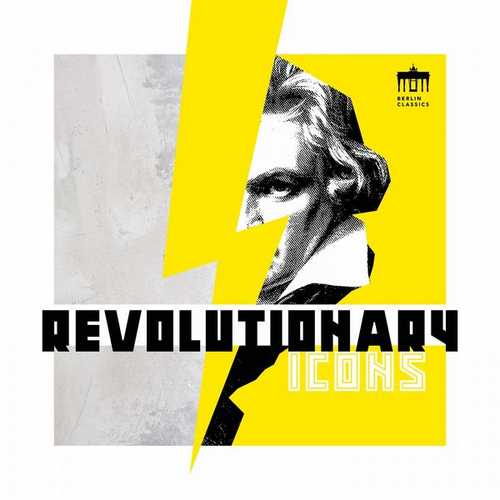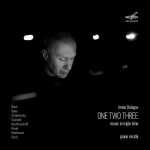

Composer: Ludwig van Beethoven, Amy Winehouse, Jimi Hendrix, David Bowie, Frank Zappa, Stevie Wonder
Performer: Eckart Runge, Jacques Ammon
Format: FLAC (tracks)
Label: Berlin Classics
Catalogue: 0301729BC
Release: 2021
Size: 529 MB
Recovery: +3%
Scan: cover
01. Beethoven: Cello Sonata No. 4, Op. 102/1: I. Andante – Allegro vivace
02. Beethoven: Cello Sonata No. 4, Op. 102/1: II. Adagio – Allegro vivace
03. Winehouse: Back to Black (Arr. for Cello and Piano)
04. Beethoven: Adelaide (From Lieder, Op. 46) (Arr. for Cello and Piano)
05. Hendrix: Purple Haze (Arr. for Cello and Piano)
06. Beethoven: Adagio ma non troppo et Fugue (From Piano Sonata, Op. 110) (Arr. for Cello and Piano)
07. Bowie: Warszawa (Arr. for Cello and Piano)
08. Beethoven: Cavatina (From String Quartet, Op. 130) (Arr. for Cello and Piano)
09. Zappa: Bebop Tango (Arr. for Cello and Piano)
10. Wonder: Don’t You Worry ‘Bout a Thing (Arr. for Cello and Piano)
Tales of rabble-rousing heroes, iconoclastic poltergeists, living legends – in 2021, Eckart Runge and Jacques Ammon celebrate their quarter-century as a duo and the release of their debut album by Berlin Classics. “Revolutionary Icons” is a bold, border-breaching album concept full of energy-packed music by Classical crossover craftsman Ludwig van Beethoven coupled with rock-pop-jazz icons – and at the same time, testimony to teamwork by two inquisitive and insatiable music explorers.
The tracklisting reads as if you were twiddling the knobs of the car radio and hopping back and forth between a classical station and rock radio. The duo launch their expedition with consummate master Beethoven and his Cello Sonata No. 4, Op. 102 No. 1. “At first hearing impossible to understand”, wrote a puzzled contemporary after the 1815 premiere. The work is revolutionary in its formal layout, strict on counterpoint. After decades of engaging with Beethoven (in part as a member of the world-famous Artemis Quartet, of which he was the co-founder) Eckart Runge here sets out together with Jacques Ammon in search of bridges to recent music history and finds what he is looking for in familiar names such as Amy Winehouse on her big hit Back to Black, Purple Haze by Jimi Hendrix, David Bowie’s Warszawa, the Be-bop Tango from Frank Zappa and finally Don’t You Worry ’Bout A Thing by Stevie Wonder. All these counterparts are united by their commanding position within their genre, their readiness to break down barriers and indeed their legendary status and influence upon following generations of male and female musicians.
The settings of the songs for the combination of cello and piano were made in collaboration with the well known composer and arranger Wolf Kerschek. The prime consideration was to go beyond mere transposition of the works and to shed new light on them by exploiting the sonic potential of the instruments and the artistic capabilities of the two musicians. That applies no less to the works that forge links to the 19th century between the hits of the 20th: Beethoven’s previously discussed Cello Sonata No. 4 and the arrangements of his song Adelaide, the third movement of his Piano Sonata Op. 110 and the Cavatina from his String Quartet Op. 130.
The duo of Runge & Ammon arose from a shared passion for chamber-musical incursions into the territory of jazz, tango, rock music, and music for theatre and film. Along with their concept-guided programme planning and their intense emotional involvement, the two are known for their informative and entertaining moderation, delighting audiences and making ambitious topics accessible.
Duo Runge & Ammon sees its artistic credo realized inter alia in social commitment. The two musicians give regular benefit concerts and get directly involved in such organizations as Jeunesses Musicales Deutschland, Yehudi Menuhin – Live Music Now, youth orchestra projects in South America and Mit-Mach-Musik (“all-join-in” music), a Berlin integration project for refugee children.
Rebellious heroes, subversive troublemakers and living legends – Eckart Runge and Jacques Ammon celebrate their duo’s 25th anniversary and the release of the debut album with the Berlin Classics label in 2021. On the one hand, “Revolutionary Icons” is a bold, genre-crossing album concept full of energetic music of the classical frontiersman Beethoven paired with the icons of rock, pop and jazz. Besides that, it also represents a testament to the collaboration of two curious and voracious musical explorers. Reading the track listing feels like flipping the frequency dial on your car radio between classical station and rock radio. The starting point for the duo’s exploration is master Beethoven and his Cello Sonata No. 4, op. 102/1. “Impossible (to) understand at first hearing,” wrote a contemporary in 1815 after the premiere, because of its revolutionary formal layout, yet strict counterpoint. After decades of dealing with Beethoven (for example as a member of the world-famous Artemis Quartet), Eckart Runge searches for bridges to more recent music history and finds them in the famous names of Amy Winehouse, with her probably most successful hit “Back to Black”, “Purple Haze” by Jimi Hendrix, David Bowie’s “Warszawa”, the “Bebop Tango” by Frank Zappa and finally “Don’t You Worry ’bout a Thing” by Stevie Wonder. All these counterparts are united by their outstanding position within their genre, their courage to cross borders and, last but not least, their legendary status and influence on subsequent generations of musicians. The arrangements of the songs for the combination Cello and Piano were created in collaboration with the well- known composer and arranger Wolf Kerschek. The goal was, not only to realize the works, but to take a look at them through the tonal possibilities of the instruments and the artistic abilities of the two musicians. This is also true for Beethoven’s works, which, among the hits of the 20th century, reference the listener back to the 19th century. Besides the already mentioned 4th Sonata for Violoncello and Piano, arrangements of the song “Adelaide”, the third movement of Beethoven’s Piano Sonata op. 110 and the Cavatina from his String Quartet op. 130 follow.



